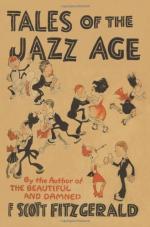|
This section contains 2,656 words (approx. 9 pages at 300 words per page) |

|
SOURCE: “Words and Music: Narrative Ambiguity in ‘Sonny's Blues,’” in Studies in Short Fiction, Vol. 19, No. 4, Fall, 1982, pp. 367-372.
In the following essay, Byerman discusses the aesthetics of James Baldwin’s “Sonny’s Blues”.
“Sonny's Blues” has generally been accorded status as the best of James Baldwin's short stories. It tells of the developing relationship between Sonny, a musician and drug addict, and the narrator, his brother, who feels a conflict between the security of his middle-class life and the emotional risks of brotherhood with Sonny. The critics, who differ on whether the story is primarily Sonny's or the narrator's, generally agree that it resolves its central conflict.1 If, however, resolution is not assumed but taken as problematical, then new thematic and structural possibilities are revealed. The story becomes a study of the nature and relationship of art and language. The commentary on the story has centered on...
|
This section contains 2,656 words (approx. 9 pages at 300 words per page) |

|


